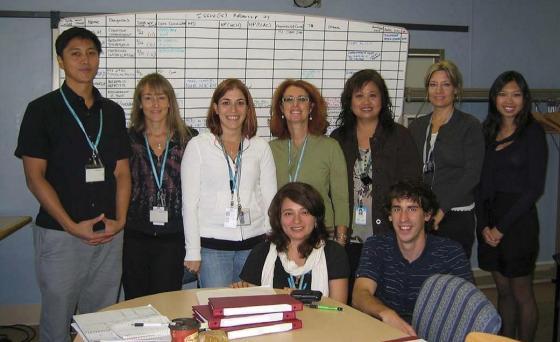Starting in April 2011, NHS hospitals in England will not be paid for “avoidable” readmissions occurring within 30 days of discharge. As Trust finance officers begin steeling themselves for this change, they may be interested in a Canadian project designed to predict and avoid such readmissions.
Known as the Toronto Post-Discharge Virtual Ward, the project borrows a concept first developed at Croydon PCT in South London. Virtual wards use the daily routines and staffing of a hospital ward to deliver care at home to patients at high predicted risk of unplanned hospital admission. The key difference in Toronto is that the team focuses specifically on readmissions within 30 days.
On the day they are due to go home, patients at St. Michael’s Hospital and Toronto General Hospital are seen by a discharge coordinator who calculates their LACE score. This score, which ranges from 0-19, reflects each patient’s risk of death or readmission within the next 30 days.
Virtual ward team

Members of the Toronto post-discharge virtual ward team
Any patient with a LACE score of ten or higher is offered care on a virtual ward for the post-discharge period. Virtual ward patients are managed by a team led by a consultant physician. Other staff include a ward clerk, a pharmacist, care coordinators and nurse practitioners. Medical consultants rotate onto the virtual ward team for three-week blocks at a time. During this period, they are contactable 24 hours a day by virtual ward patients. Lucky the European Working Time Directive does not apply in Canada…
Every morning at 8.30am, the virtual ward team meets for an office-based ward round. Jobs for different members of the team are recorded on a large whiteboard together with the date when each patient will next be reviewed on a ward round. Any patients with mental health issues are scheduled for discussion on Thursday morning ward rounds, when mental health specialists supplement the usual team.
Virtual ward patients may be visited at home by various members of the team, and are encouraged to telephone the ward clerk with any concerns, who can pass on messages as required. Patients are “discharged” from the virtual ward once their health and social care management plan has been optimised, and ongoing care by the GP and community-based teams has been fully established.
Evaluation
Patients with a LACE score of 10 or higher have a 21.5% chance of readmission to hospital within 30 days, with an average readmission costing $11,000. The key questions then are whether the virtual ward can successfully mitigate this risk, and what the net cost of an averted readmission is.
In the UK, the Nuffield Trust is currently evaluating the virtual wards in Croydon, Devon and Wandsworth using a technique called propensity score matching. We are also conducting an economic analysis. In contrast, the Toronto post-discharge virtual ward is being evaluated by means of a randomised controlled trial. There will be 1,500 patients in each arm of the study with data collection due to finish in May 2012.
Already, however, there is anecdotal evidence that the project is having an effect on behaviour. Physicians returning to the hospital wards after their block on the virtual ward, report that they are taking much more care over their discharge planning than hitherto.
The Nuffield Trust is planning to validate the LACE tool on NHS data. Keep an eye on our website for further details. Details of the existing NHS predictive models – which make predictions about hospital (re)admissions over the next 12 months, rather than the 30 days post-discharge – can be found here.
